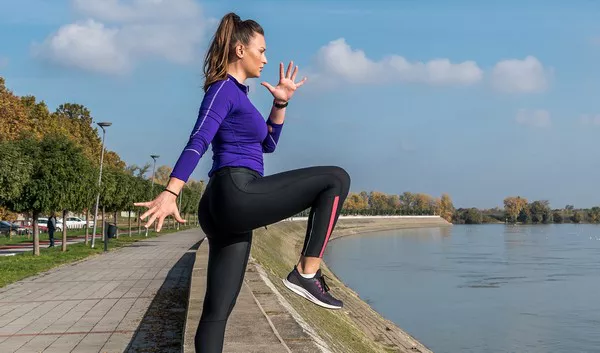Cardiovascular exercise, commonly known as cardio, is a cornerstone of fitness and wellness. It involves any activity that increases your heart rate and respiration while using large muscle groups repetitively and rhythmically. For beginners, starting a cardio routine can be transformative, offering numerous health benefits such as improved heart health, increased metabolism, better hormonal profile, and weight management. This guide delves deep into the world of cardio for beginners, exploring various accessible activities designed to make your journey both enjoyable and effective.
Cardio Exercises
Cardio exercise is essential for maintaining cardiovascular health and aiding in weight loss or management. By engaging in regular cardio activities, beginners can improve their stamina, decrease risks of chronic diseases, and enhance overall mental health. The beauty of cardio lies in its versatility and scalability, making it suitable for fitness novices.
Types of Beginner-Friendly Cardio
Walking
Often underestimated, walking is a potent cardiovascular exercise that is highly accessible to virtually everyone. It requires no special equipment other than a good pair of shoes and can be done anywhere, from city parks to rural paths and even treadmills.
Tips for Effective Walking:
Maintain Good Form: Keep your head up, shoulders back, and spine straight. Your arms should swing naturally with each stride.
Increase Intensity Gradually: Start with light 10-15 minute walks, gradually increasing the time and introducing brisk intervals.
Running/Jogging
Running or jogging is a step up from walking and is excellent for building endurance and cardiovascular capacity. It’s efficient in burning calories and strengthening the musculoskeletal system.
Starting Tips:
Begin with Brisk Walking: Progress to intervals of jogging and walking, gradually increasing the duration of jogging intervals as fitness improves.
Consider Interval Training: Simple interval training, such as alternating between walking and sprinting, can make workouts more manageable and fun.
Swimming
Swimming is a perfect low-impact exercise that works the entire body. It’s particularly beneficial for those with joint issues or excess weight, as the buoyancy of water reduces stress on the body.
Overcoming Access Barriers:
Find a Local Pool: Many community centers offer affordable memberships and beginner classes.
Join Beginner Classes: These can provide structured workouts and improve swimming techniques.
Cycling
Whether outdoor or stationary, cycling is another excellent cardiovascular workout that puts less stress on the joints than running.
Getting Started:
Choose the Right Bike: Ensure the bike fits your body to avoid discomfort.
Start with Flat Routes or Low Resistance: Build your endurance without overwhelming yourself.
Dancing
Dance fitness classes like Zumba or hip-hop are not only fun but also a great way to get your heart rate up. They combine music with movement, making cardio enjoyable.
Recommendations for Beginners:
Try Different Styles: Find a style that you enjoy to keep motivation high.
Join Beginner Classes: Look for classes that cater to beginners to ensure the moves are not too complex.
Cardio Machines
For those who prefer working out in a gym, cardio machines such as ellipticals, stair climbers, and rowing machines offer effective workouts.
Machine Options:
Ellipticals: Great for a low-impact full-body workout.
Stair Climbers: Excellent for building leg strength and stamina.
Rowing Machines: Provide a full-body workout, enhancing both strength and cardiovascular fitness.
Choosing the Right Cardio Exercise
When selecting a cardio activity, consider:
Personal Preference: Choose activities that you enjoy to maintain long-term engagement.
Fitness Level: Start with exercises that match your current fitness level.
Available Resources: Consider what equipment you have access to and what fits into your budget.
Getting Started with Cardio
Importance of Warm-up and Cool-down
Begin each session with a 5-10 minute warm-up to prepare your body for exercise and end with a cool-down to gradually reduce heart rate.
Setting Realistic Goals and Tracking Progress
Define clear, achievable goals and use tools like fitness apps or journals to monitor your progress.
Finding a Workout Buddy or Joining a Group Fitness Class
Exercising with others can boost your motivation and make it easier to stick to your routine.
Staying Motivated and Overcoming Challenges
Keep your routine interesting by varying your activities and setting regular challenges. Remember, consistency is key to seeing results.
Conclusion
Cardiovascular exercise is a gateway to improved health and vitality. For beginners, the key is to start slow, choose activities that are enjoyable, and gradually increase intensity as fitness levels improve. By integrating these beginner-friendly cardio options into your life, you set the foundation for a healthier lifestyle that can dramatically enhance your quality of life. Whether you choose walking, swimming, cycling, dancing, or using cardio machines, each step you take is a move toward achieving lasting health benefits.
[inline_related_posts title=”You Might Be Interested In” title_align=”left” style=”list” number=”6″ align=”none” ids=”77985,7734,7731″ by=”categories” orderby=”rand” order=”DESC” hide_thumb=”no” thumb_right=”no” views=”no” date=”yes” grid_columns=”2″ post_type=”” tax=””]
































